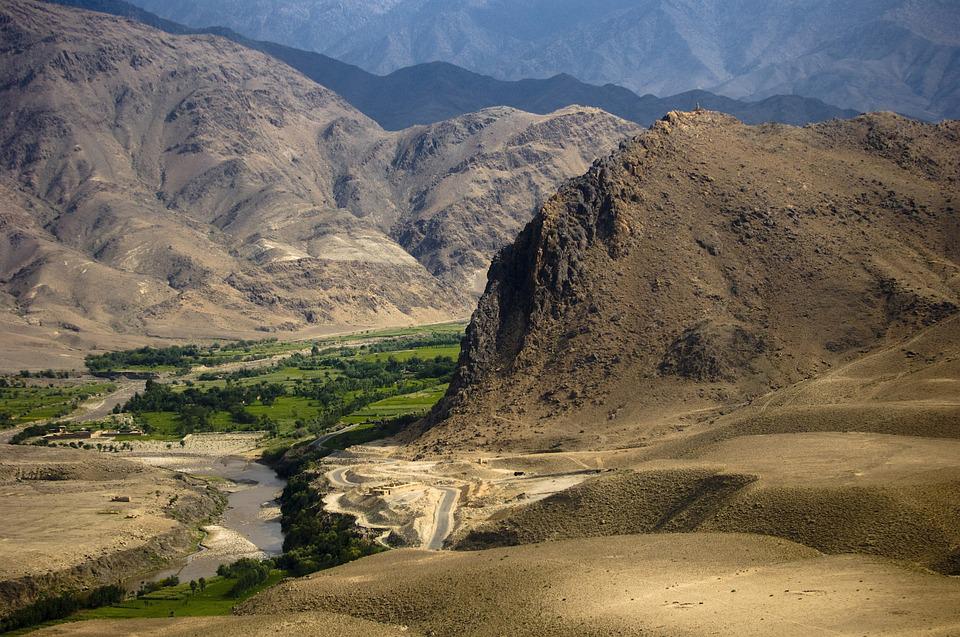Анализ эрозии почв на основе RUSLE и оценка мер по борьбе с эрозией в Кабульском бассейне.
Самиулла Патьял
Инженерный факультет гидротехнических сооружений, Кабульский политехнический университет, г. Кабул, Афганистан
E-mail: spatyal65@gmail.com
https://doi.org/10.29258/CAJWR/2022-R1.v8-1/143-159.eng
Аннотация
Освоение и охрана водных и земельных ресурсов Кабульского речного бассейна имеют решающее значение для обеспечения его устойчивого социально-экономического и экологического развития. Поскольку сток с территории бассейна пересекает международные границы и попадает на территорию бассейна р. Инд, странам верховий и низовий чрезвычайно важно тщательно планировать меры по эксплуатации соответствующих ресурсов и управлению ими. Ввиду особенностей рельефа, почвенных и климатических условий, а также обезлесения в недавнем прошлом в бассейне р. Кабул наблюдается значительная водная эрозия почв, что указывает на необходимость анализа ее специфики и принятия надлежащих мер контроля. Настоящее исследование было проведено с применением комбинации модели на основе пересмотренного универсального уравнения потерь почвы ввиду эрозии (RevisedUniversalSoilLossEquation, RUSLE) и ГИС-методов с целью анализа темпов суммарной потери почвы и ее пространственного распределения внутри целевого бассейна. Результаты исследования указывают на среднегодовые потери почвы в размере 15,1 т/га, т.е. существенную эрозию почв. Что же касается пространственного распределения потерь, то по данным настоящего исследования до 99% их среднегодового объема относятся к категории допустимых (0-5 т/га). Принимая во внимание темпы потери почв, местную топографию и возможности вовлечения местных общин, авторы рекомендуют провести дальнейший подробный диагностический анализ ситуации для сбора данных и поддержки последующих мер борьбы с эрозией, таких как профилактика обезлесения, строительство небольших речных плотин, террасирование, тренчинг в холмистых зонах, восстановление растительного покрова на открытых и луговых угодьях и сбор дождевой воды.
Available in English
Download the article (eng)Для цитирования: Patyal, S. (2022). RUSLE-based soil erosion assessment and erosion control evaluation in the Kabul Watershed. Central Asian Journal of Water Research, 8(1), 143–159. https://doi.org/10.29258/CAJWR/2022-R1.v8-1/143-159.eng
Список литературы
Benavidez, R., Jackson, B., Maxwell, D. & Norton, K. (2018). A review of the (Revised) Universal Soil Loss Equation ((R)USLE): With a view to increasing its global applicability and improving soil loss estimates. Hydrology and Earth System Sciences, 22 (11), 6059-6086 (https://doi.org/10.5194/ hess-22-6059-2018)
FAO (2012). The Islamic Republic of Iran. In Government of the Islamic Republic of Afghanistan (https://doi.org/10.4324/9780203847459)
Folliott, P., Brooks, K., Neary, D., Roberto, T. & Chevesich, P. (2013). Soil erosion and sediment production on watershed landscapes: processes and control. In Documento Técnico del PHI-LAC 32 (https://www.fs.usda.gov/treesearch/pubs/46794)
Gabriels, D., Cornelis, W.M. & Schiettecatte, W. (1998). Water Harvesting and Water-Saving techniques. V, 1-10
Gis, C.E. & David, R. (2014). Soil Erosion Assessment using GIS and Revised Universal Soil Loss Equation ( RUSLE ). List of Figures
Hickey, R. (2000). Slope angle and slope length solutions for GIS. Cartography, 29 (1), 1-8 (https://doi.org/10.1080/00690805.2000.9714334)
Islamic, T., Of, S. & Irrigation, M. O. F. (2004). A strategic policy framework for the water sector : final draft / Transitional Islamic State of Afghanistan, Ministry of Irrigation, Water Resources Environment (MIWRE). A Strategic Policy Framework for the Water Sector : Final Draft / Transitional Islamic State of Afghanistan, Ministry of Irrigation, Water Resources Environment (MIWRE), May (https://doi.org/10.29171/azu_acku_pamphlet_td313_a3_s775_2004)
Julien, P.Y. (2004). EROSION AND SEDIMENTATION. 2nd Ed., Erosion and Sedimentation, 2nd Ed. Pierre Y. Julien Frontmatter More information, 1 (www.cambridge.org)
Jung, C.-G., Jang, W.-J. & Kim, S. (2017). Estimation of 1 km Grid-based WATEM/SEDEM Sediment Transport Capacity Using 1 Minute Rainfall Data and SWAT Semi-distributed Sediment Transport Capacity Results for Han River Basin of South Korea. Hydrology and Earth System Sciences Discussions, January, 1-21 (https://doi.org/10.5194/hess-2016-649)
Khassaf, S. & Al Rammahi, A. (2018). Estimation of Slope Length Factor (L) and Slope Steepness Factor (S) of Rusle Equation in the Euphrates River Watershed By Gis Modeling. Kufa Journal of Engineering, 9 (3), 81-91 (https://doi.org/10.30572/2018/kje/090307)
Khassaf, S.I., Hussein, A., Al, J., Al-Abadi, A.M.A., Ghalib, H.B., Al-Qurnawi, W.S., Hussein, M.H. & Keya, D.R. (2018a). Estimation of Soil Erosion Risk of the Euphrates River Watershed Using RUSLE Model, Remote Sensing and GIS Techniques. Polytechnic Journal, 8 (1), 8-21 (https://doi.org/10.25675/10217/201096)
Khassaf, S.I., Hussein, A., Al, J., Al-Abadi, A.M.A., Ghalib, H.B., Al-Qurnawi, W.S., Hussein, M.H. & Keya, D.R. (2018b). Estimation of Soil Erosion Risk of the Euphrates River Watershed Using RUSLE Model , Remote Sensing and GIS Techniques. Polytechnic Journal, 8 (1), 8-21
Kouli, M., Soupios, P. & Vallianatos, F. (2009). Soil erosion prediction using the Revised Universal Soil Loss Equation (RUSLE) in a GIS framework, Chania, Northwestern Crete, Greece. Environmental Geology, 57 (3), 483-497 (https://doi.org/10.1007/s00254-008-1318-9)
Kuenstler, W. (1998). C factor: Cover-Management Author: In Guidelines for the Use of the Revised Universal Soil Loss Equation (RUSLE) Version 1.06 on Mined Lands, Construction Sites, and Reclaimed Lands Terrence, 148
Lee, J.P. (2007). Estimation of Rainfall-runoff Erosivity for Individual Storm Events. Journal of Hydrology, 160 (537), 2007
Manual, R., Flood, F., Management, R., & Measures, S. (2012). Chapter 5: Physical Methods for Slope Stabilization and Erosion Control, 30-59
Molla, T. & Sisheber, B. (2017). Estimating soil erosion risk and evaluating erosion control measures for soil conservation planning at Koga watershed in the highlands of Ethiopia. Solid Earth, 8 (1), 13-25 (https://doi.org/10.5194/se-8-13-2017)
Panagos, P., Borrelli, P., Meusburger, K., van der Zanden, E.H., Poesen, J. & Alewell, C. (2015). Modelling the effect of support practices (P-factor) on the reduction of soil erosion by water at European scale. Environmental Science and Policy, 51 (April), 23-34 (https://doi.org/10.1016/j.envsci.2015.03.012)
Sahar, A.S. (2013). Shukran_Thesis.pdf [Colorado State University Fort] (https://www.scribd.com/ document/362172198/Shukran-Thesis)
UNEP (2004). Afghanistan’s Environmental Recovery. A Post-Conflict Plan for People and their Natural Resources
FAO (2012). Watershed Atlas of Afghanistan, 1-184.
пересмотренное универсальное уравнение потерь почвы ввиду эрозии (RUSLE), террасирование, траншеи (тренчинг), цифровая модель рельефа (ЦМР)